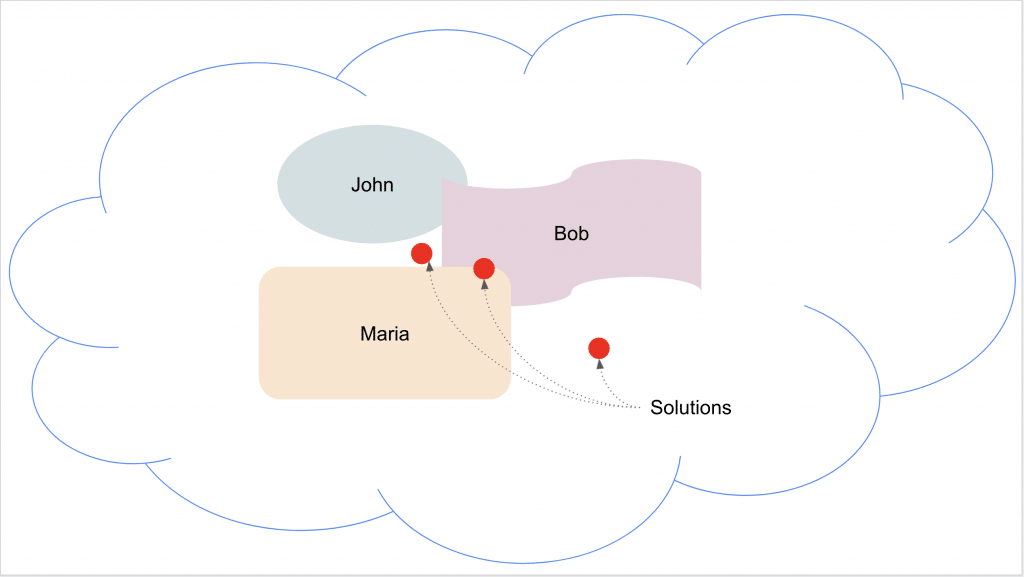Have you ever found yourself in a group discussion about problem-solving, where people list all the reasons why a solution is impossible or extremely difficult? They might say things like “It’s very difficult”, “This solution is very expensive”, “It won’t work!” or even “This is a stupid idea!”
If this sounds familiar, you’ve experienced Psychological Inertia.

Now, let’s dive into the details.
I usually begin with a straightforward, unembellished definition. Unfortunately, the Cambridge dictionary doesn’t provide one for this term, so I’ll reference Wikipedia instead:
Psychological inertia is the tendency to maintain the status-quo (or default option) unless compelled by a psychological motive to intervene or reject this. … Psychological inertia has also seen to be relevant in areas of health, crime and within the workplace.
This lengthy sentence might require several readings for comprehension, especially without background knowledge on the subject.
Let me attempt to explain its meaning, drawing from our experiences and relevant real-life events and examples.
Procrastination is a common example of psychological inertia, where a person delays starting tasks despite knowing the negative consequences. Another example is the reluctance to change unhealthy habits, such as smoking or poor eating patterns, even when aware of the health risks involved.
Additionally, psychological inertia can manifest in resistance to adopting new technologies or methods in the workplace, preferring familiar routines over potentially more efficient alternatives. This resistance to change can also be seen in social contexts, where individuals may avoid forming new relationships or stepping out of their comfort zones due to fear of the unknown or potential failure. Understanding and addressing psychological inertia is crucial for personal growth and adapting to new circumstances.
This article might interest you: Does everyone want to be profitable?
In the context of this article, phrases such as “It can’t be done,” “It is too expensive,” or “extremely difficult” are all ways of stating that an idea isn’t sufficient. I wish to revisit and expand on the example I introduced at the start.
Throughout my career, I’ve frequently found myself and others dismissing potential solutions or hesitating to test new ideas for various reasons. Some might interpret this as making excuses or laziness. However, the truth is, we are reluctant to pursue or experiment with something we don’t believe in.
Therefore, unless an external factor or compelling evidence proves us wrong, we will continue to resist a suggested solution that we don’t believe in.
Unwillingness to explore something we don’t believe in is part of psychological inertia.
When we began introducing the concept of problem-solving tools and explaining their benefits, many people were skeptical. Here are some of the arguments we encountered:
Note: This skepticism often stems from psychological inertia, which is essentially the belief of, “It can’t be done because I don’t believe in it.”
Back to Professional Experience…
For simplicity’s sake, let’s assume that the cloud below is the entire, currently available, and continuously growing knowledge and experience.

Our engineers, John, Maria, and Bob, have diverse experiences, some of which overlap.
We are seeking solutions, represented by red dots. One solution falls within our engineers’ existing expertise, but the other two don’t. This is when the team begins to research and brainstorm ideas to solve these problems. However, solutions outside their areas of expertise are often not easily accepted, mainly because people generally resist what they don’t understand or haven’t experienced.
Another issue is that it takes significantly more time to devise solutions outside our expertise. While learning new things to expand our experience is part of the process, there’s another factor at play: psychological inertia. We naturally tend to seek solutions within our own experience.
Unless an external force pushes us, it’s challenging to think outside our own experiences. Without such a force, the team’s only chance is through a lot of trial and error, and a bit of luck.
Difficulty in search for solutions outside of our own experience is caused by psychological inertia.
Discover: Help the AI Assistant to help you – define the project context.
To delve into the unknown, we must leave our comfort zone. While easier said than done, it’s necessary for growth. The comfort zone is aptly named: it’s a comfortable place where we operate with ease and no extra effort. But to venture beyond it requires learning new skills, trying unfamiliar tasks, and investing in hard work.
Humans, by nature, tend to be lazy. The average person will typically choose the path of least resistance. However, this choice only includes options within their current knowledge. There might be a simpler path that remains unexplored. To discover this, one must step out of their comfort zone.
Difficulty to break out of our comfort zone to search for better solutions is caused by psychological inertia.
Numerous examples illustrate how our psychological inertia influences us. However, rather than expanding on these, I’d like to shift focus.
We’ve received feedback on our solution, with many stating, “Humanity is always progressing without special tools!”. To this, I respond, “That’s simply not true!”, and here’s why.
Indeed, humanity is constantly progressing and innovating. Some individuals, like Nikola Tesla, have done this exceptionally well. Tesla, brimming with ideas, constantly pushed the boundaries of his comfort zone. He, and other notable geniuses, thought differently – that’s what made them geniuses!
The average person also innovates, but the question is, how much effort does it take and how long? Many innovations that seem trivial today took years to discover and develop, even when the technology already existed. For instance, consider the history of the wheeled suitcase – it took over a decade to develop a version that people actually used.
Regardless of our methods for innovation and idea generation, we need a systematic approach to speed up the process. Without it, we’re simply waiting for inspiration to strike.
Any systematic approach to problem-solving helps to break out of psychological inertia.

Before concluding, I’d like to address the second question posed in this article’s title: “What is wrong with us?”.
The simplest response is: “Nothing!”. We’re just being human. This is how our minds are wired. If you delve into the topic of psychological inertia, you’ll find that this phenomenon is not fully understood, including its underlying causes. But understanding this is not the objective of this article, nor will it resolve any issues for us as innovators. Overcoming psychological inertia, however, will!
Ironically, to overcome psychological inertia, we must first accept that we need assistance. This acceptance is, in itself, hindered by psychological inertia. The sooner we acknowledge this, the quicker we can begin to improve our thought processes and become more innovative thinkers.
Now that we’ve accepted our fate, let’s start changing it.
There are several tools and methodologies available for this. The simplest ones are pen and paper or a whiteboard. More sophisticated options include charting tools, idea management tools, and project management tools.
The PRIZ Innovation Platform is a unique SaaS tool specifically built to help engineers break out of their patterns and overcome psychological inertia. It provides various problem-solving tools since innovation is fundamentally about solving someone’s problem.
Go out and innovate with the PRIZ Innovation Platform! We’re excited to see what creative ideas you’ll come up with!
If you want to keep reading, we look forward to seeing you on our blog. Surely, you will find much more relevant information there.